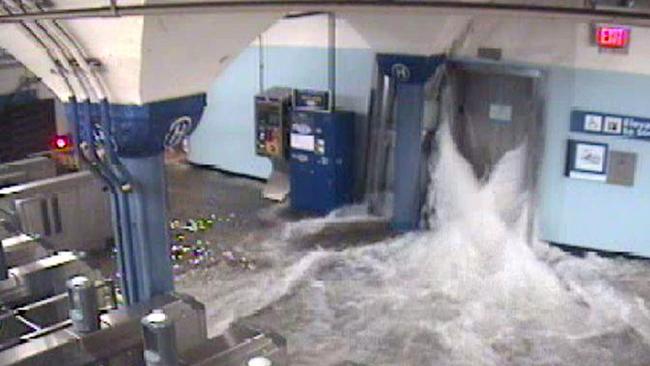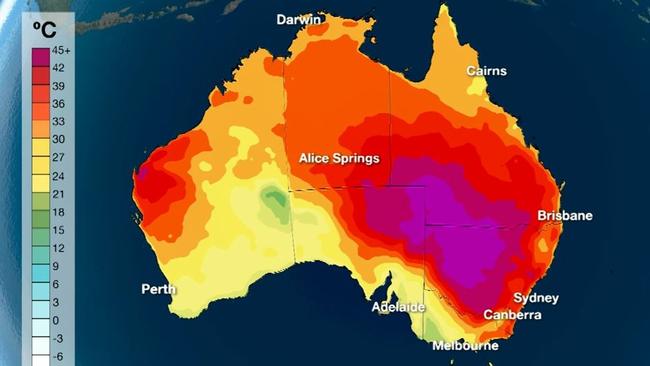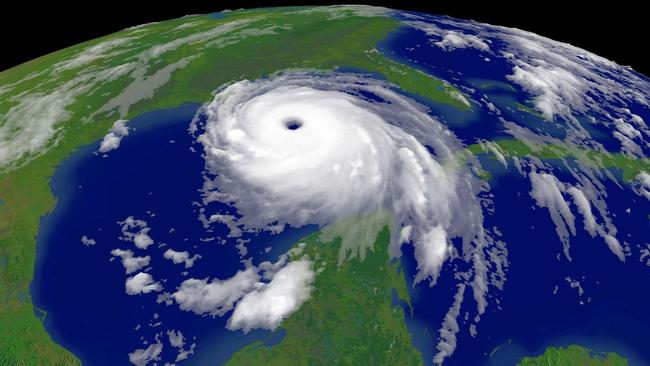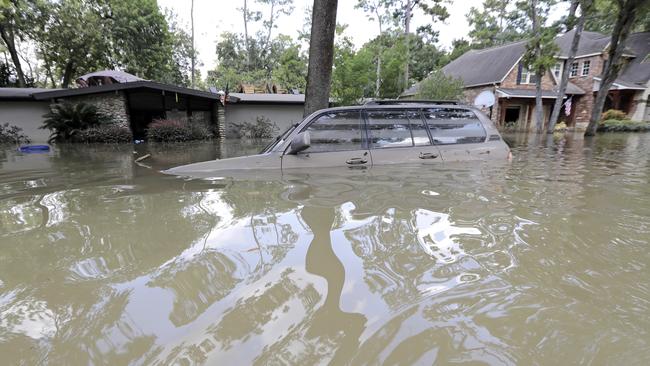Climate change: Paris Agreement makes too little difference

Recent weather disasters — flooding across Asia and hurricanes hitting the US and Caribbean — have only increased the volume from commentators and politicians who tell us: “This is what climate change looks like.”
The destruction, they say, provides added reason to double down on the Paris Agreement, the climate pact adopted in December 2015. Those who don’t think this way are haters and wreckers, no different from Donald Trump, who cancelled US involvement in the treaty.
The US approach to climate change is obviously deeply problematic. The President has failed to even acknowledge that climate change is real, and his administration lacks any forward-looking climate policy.
But if we are going to tackle climate change effectively, we must also be able to admit that the Paris Agreement doesn’t withstand scrutiny. And if our goal is to help those who will be hurt most by future hurricanes, we have more effective policy options.
When the agreement was signed, the rhetoric was grandiose: we were told in no uncertain terms that the pact would keep temperature rises “well below 2C”, with 195 countries “pursuing efforts to limit the temperature increase to 1.5C”.
But to get a sense of what Paris will actually achieve, we need to ignore the big talk and look at the actual national carbon-cutting promises made through to 2030.
The findings from the major climate models are clear: achieving the 1.5C target would require nothing less than the entire planet abandoning the use of every single fossil fuel in less than four years.
Let’s think about what that looks like. Come January 2021, we would have no new iron or steel, which undergird global construction, but still lack a “green” alternative. No more fossil fuel-based cement, which at about four billion tonnes annually is the building block of the modern age. Almost no plastics, which permeate modern life. And unless an effective, scalable alternative replaces the present way of making fertiliser, we would be looking at half of humanity starving. This promise is so lightly delivered by politicians, but achieving 1.5C requires us to shut down the power sources for more than four-fifths of the planet’s economy in less than 40 months.

It is testament to the warped climate conversation that it is actually necessary to spell this out: no, that is not going to happen.
Even more damning is the fact the actual national promises made in Paris are also nowhere near enough to keep temperature rises under the more lax 2C target.
The UN Framework Convention on Climate Change — the organisation in charge of the Paris meeting — estimates that if every country makes every single promised carbon cut between 2016 and 2030 to the fullest extent possible and there is no carbon leakage, it will be equivalent to cutting carbon dioxide by 60 gigatonnes by 2030. It is widely acknowledged that to keep temperature rises below 2C, we must reduce CO2 equivalent emissions by nearly 6000Gt.
This means that even in an implausibly optimistic best-case scenario, Paris leaves 99 per cent of the problem in place.
According to the UN’s own climate model, the difference between a world with all the promised Paris cuts and one without them is just 0.05C. Even if every nation including the US extended its carbon cut promises past 2030 and kept them going throughout the century, temperatures would drop by less than 0.2C.
So, how do politicians get away with claiming the agreement would achieve a lot more? This rests on sophistry, and specifically on the far-fetched assertion that much stronger carbon cuts could happen after 2030. When you hear a claim such as “Paris will cut temperatures 1.6C by the end of the century”, it relies on nothing but a wish and a prayer that an additional 4100Gt of CO2 equivalent will be cut after the Paris Agreement runs out in 2030.
Believe that and you need to believe that a major campaign promise made by president Bill Clinton in 1993 would be happily fulfilled by Trump today, or that a Democrat (or even a Republican) in 2035 will feel honour-bound by a policy set by today’s White House. History gives very good reason for healthy scepticism. In 1992, to take just one example, every industrialised nation promised to return emissions to 1990 levels by 2000. Eight years later, almost every country missed the target.

If the planet requires a carbon diet, then the Paris Agreement is just a flippant promise to eat one salad. Its advocates want us to believe that, after this salad, we will undertake an incredibly strict exercise and diet regimen. Mind you, none of the real effort will take place today or even tomorrow but far in the future. Yet we are expected to believe that a promise to continue life as normal while eating a single salad is going to have a dramatic slimming effect.
All this shows that, even in a best-case scenario, we are going to end up with a fraction of what politicians claim — about 60Gt. But things get worse. Nations are falling short even of achieving that.
A study of the Paris treaty in Nature finds that “no major advanced industrialised country is on track to meet its pledges”. Not a single wealthy, major emitter is set to meet its promises.
Japan promised to cut emissions by 18 per cent below 1990 levels by 2030, but the analysis finds that it is on target to cut just 4 per cent. The EU vowed to cut emissions to 40 per cent below its 1990 level by 2030 but has enacted policies that will reduce less than half that: 19 per cent. Even including pledged policies, it will make it to less than 30 per cent.
And the US was off-track long before Trump quit the Paris Agreement. Barack Obama promised in Paris to cut emissions to 18 per cent below 1990 levels by 2025 but never backed this with sufficient legislation. With the Clean Power Plan and pledged policies, he would have achieved at most a 7 per cent reduction.
Yet many of us still have a sense that solar and wind is sweeping across the world, a cost-undercutting miracle that will swiftly overtake fossil fuels and save the day. Solar and wind get good PR. But if they were cheaper than fossil fuels, everyone would switch. We wouldn’t need meetings in Paris or to worry about the likes of Trump: every business and government on the planet would leap to the cheaper energy source. The climate problem would be solved.
A close look at the data and scenarios from the OECD’s International Energy Agency, the foremost energy analysts, reveals that just 0.6 per cent of the world’s energy is today derived from solar photovoltaic and wind energy technology.
In its “new policies scenario”, where it assumes the Paris Agreement to be fully implemented, the IEA finds that solar PV and wind will provide less than 3 per cent of our needs in a quarter-century.

Fossil fuels will go from meeting 81 per cent of our energy needs to 74 per cent in 2040. Even in an utterly implausible, super-green scenario, IEA finds 58 per cent of our energy needs in a quarter-century will come from fossil fuels.
There’s more. We often hear that China is the world’s new “green superpower” but this doesn’t hold true. It gets just 0.5 per cent of its energy from solar and wind power, less than its hydropower (3 per cent) and its environmentally destructive wood-burning (7 per cent), and insignificant compared with the 89 per cent from non-renewables.
Even in 2040, with the Paris Agreement in place, China will get 4.2 per cent from solar and wind, with non-renewables providing 83.5 per cent. (And even then China’s share of green energy will be smaller than it was at any point in the 20th century.)
Looking globally, one of the world’s foremost energy experts, Vaclav Smil, puts it this way: “Claims of a rapid transition to a zero-carbon society are plain nonsense … Even a greatly accelerated shift towards renewables would not be able to relegate fossil fuels to minority contributors to the global energy supply anytime soon, certainly not by 2050.”
There are contexts where renewables are more efficient. But since all the solar panels or wind turbines in one place produce energy at the same time (when the sun is out or the wind is blowing), the value of electricity drops drastically as more and more is produced, undermining competitiveness. When there is no sun or wind, we must still pay for back-up fossil fuels, which now cost more because they are used less.
This year, IEA evidence shows that the world will spend $US125 billion ($160bn) on subsidising solar and wind. During the next 25 years, more than $US3 trillion will prop up the grand “achievement” of meeting less than 3 per cent of the planet’s energy needs. In 2040, even with a carbon tax and the Paris Agreement fully implemented, the IEA finds that on average non-hydro renewables will be the most expensive power you can produce.
Jim Hansen, a one-time adviser to Al Gore and one of the world’s best-known climate change scientists, puts it bluntly: “Many well-meaning people proceed under the illusion that ‘soft’ renewable energies will replace fossil fuels if the government tries harder and provides more subsidies … But suggesting that renewables will let us phase rapidly off fossil fuels in the United States, China, India or the world as a whole is almost the equivalent of believing in the Easter bunny and tooth fairy.”
An understandable response to such concerns is to say that doing something is better than nothing. Or to note that the Paris Agreement will help the world’s most vulnerable. They still will be more vulnerable in the future than today, but slightly less so than they would have been without it.
Such statements incorrectly reassure us that we are on the right track. But they ignore the treaty’s huge cost and the alternative ways we could spend the political capital, energy, and money devoted to these feeble cuts. The politicians who signed the accord in December 2015 certainly weren’t crowing about the price tag. But wind and solar energy aren’t ready to fully compete yet, and doing things less efficiently has a cost.
In this global pact, what national governments have promised to do is to use less efficient, more expensive energy. This means the entire world will grow at a slightly slower pace than it would have.
Using the best peer-reviewed energy-economic models, we can calculate the cost for major economies and find a global price tag from this. In total the loss in gross domestic product growth from Paris adds up to $US1 trillion to $US2 trillion every year by 2030, and for every year the rest of the century. This makes Paris the most expensive treaty in history.
It is the equivalent of taking $US150 to $US300 off every person on the planet every year. It’s reasonable for taxpayers to ask whether keeping this money would mean it could be better spent on schools, hospitals or care for the elderly.
In the developing world, there are definitely better ways to allocate that money. The world’s climate-vulnerable are almost invariably the worst off today. Climate is a First World concern; the vast majority of the planet’s inhabitants face more immediate problems. The UN’s largest global poll of nearly 10 million people’s priorities reveals climate change comes last for most of the world’s population, behind education, health, food and 12 other, more pressing, issues.
Analysis by Copenhagen Consensus has highlighted many phenomenal development investments where a fraction of the Paris treaty’s budget would help vulnerable communities much more today than carbon cuts would in 100 years: things such as stepping up investment in combating tuberculosis, nutritional investments for young children, vaccinations and achieving universal access to family planning.
But what of the weather events that have sparked the most recent calls for climate action? As the US and Asia have been battered by hurricanes and flood-causing storms in recent months, we often have been told that, out of concern for future weather event victims, we must implement strong carbon cuts. (Even in other parts of the world, it seems, US weather dominates news cycles and has political effects.)
It’s a powerful idea that superficially feels like it makes sense: the weather is causing problems, and climate change affects the weather, therefore we should fix the problem through carbon cuts.
The initial problem is with the premise that climate change is behind the weather events that we see on the news. We actually can’t tell at present.
The latest global assessment from the UN’s Intergovernmental Panel on Climate Change concludes that “there is low confidence in attribution of changes in tropical cyclone (hurricane) activity to human influence”. The US National Oceanic and Atmospheric Administration is even more blunt: “It is premature to conclude that human activities — and particularly greenhouse gas emissions that cause global warming — have already had a detectable impact on Atlantic hurricane or global tropical cyclone activity.”
As for flooding, the UN tells us it even doesn’t know whether global warming makes the frequency and magnitude of flooding worse or better.
This simply means all the pundits claiming “this is global warming” and “we knew” are wrong. And they also neglect to mention the fact the number of strong hurricanes hitting the US has dropped during the past 140 years.

Now, many commentators will point out that climate catastrophes are getting more expensive. This is true. But it is not because of climate; it is because more people live by the seashore, with more property. Adjusted for population and wealth, US hurricane damage costs decreased slightly between 1900 and 2013. Not surprisingly, that is why the UN finds that losses adjusted for population and wealth “have not been attributed to natural or anthropogenic climate change”. Globally, the relative cost of climate-related disasters to GDP has declined almost 50 per cent since 1990.
In the long run, it is likely that climate change will cause hurricanes to become somewhat stronger but also less frequent. Yet societies also will become wealthier and more resilient. A Nature review puts this into perspective. It shows that hurricane damage currently costs 0.04 per cent of global GDP. By 2100, the increase in wealth and resilience would mean that hurricane damage would drop fourfold to 0.01 per cent of global GDP. But if we fail to do anything about global warming, then the effect of making hurricanes fewer but stronger will mean total damage ends up at about 0.02 per cent — that’s still half the impact of hurricanes today.
This is why far fewer Americans die in hurricanes today than they did 100 years ago. They are simply much richer and their society much more resilient.
What’s more, the idea that today’s carbon cuts are the solution to tomorrow’s storms doesn’t stack up. Remember, even if every nation including the US extended its Paris Agreement promises past 2030 and kept them going throughout the century, temperatures would drop by less than 0.2C. The hugely expensive treaty will have no meaningful impact on hurricanes, and what tiny change it will achieve will not be felt for generations.
Indeed, one peer-reviewed article finds that any realistically achievable climate policy “can have at best only a very small and perhaps imperceptible effect on global tropical cyclone damage”.
Instead, adaptation can be up to 52 times more effective. This means creating better, more commonsense zoning laws so houses aren’t built in harm’s way. It means setting aside more wetlands to prevent flood surges. It means building better infrastructure, including dykes and levees.
And it means remembering the simple, cheap policies such as subway covers that New York City discovered it was lacking when Superstorm Sandy hit.
It is estimated that better building codes could have avoided about 87 per cent of the damage caused by Hurricane Katrina. It’s truly absurd that commentators cheer on the Paris Agreement — which would avoid next to no damage, 100 years from now — instead of focusing on these planning and construction laws.
This holds true also if we look at poorer countries. Climate is not the only challenge facing them and, as the UN survey shows, is probably their least important challenge. It is a cruel reality that natural disasters often afflict the poorest, most vulnerable members of society the most. But the world’s poor clearly tell us they want their children to stop dying from infectious diseases, they want enough food and a better education. Achieving these things means that, aside from the direct benefits, we make the planet’s most vulnerable richer and more resilient against many challenges, climate included.
This is why we have seen a dramatic drop in deaths from climate across the world, despite the claims of green campaigners. In the 1920s, deaths from floods, droughts, storms, wildfires and extreme temperatures cost on average 500,000 lives a year. Today, because billions have been pulled out of poverty and we have increased resilience, the average death toll has dropped by 95 per cent to less than 25,000. The personal risk has decreased almost 99 per cent.
We face a stark choice: if we want to help tomorrow’s hurricane and flood victims, do we want to focus on very expensive climate policies that will take forever and provide almost no help, or do we want to spend less, to help more, faster? We need to realise that core development spending and poverty reduction are key parts of our global warming response.
But this doesn’t mean we should ignore climate change. We need to drastically improve green energy. Research and development is the best way forward, according to climate economists and three Nobel laureates who participated in the Copenhagen Consensus on Climate research project. We are far too focused on subsidising the rollout of technology that remains inefficient and unreliable, rather than investing in innovation to drive the future price of green energy below fossil fuels.
Once it is genuinely competitive, the whole world will want to leap from fossil fuels to green energy. This is why Bill Gates, Obama, Malcolm Turnbull and many others promised at the sidelines of Paris to double green energy R&D spending.
This is an excellent start, although our analysis shows that we should be even more ambitious, increasing investments sixfold. This would be much more effective and much cheaper than Paris.
And when we are told to implement subsidy-soaked climate policies out of concern for hurricane victims in Houston or flood victims in Hyderabad, we must push back and instead focus on the most effective way to achieve the greatest good.



To join the conversation, please log in. Don't have an account? Register
Join the conversation, you are commenting as Logout